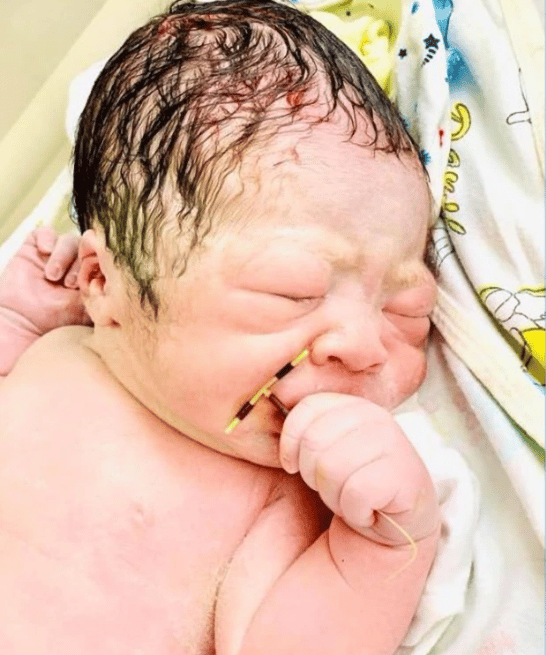Is It Really Possible For An Iud To Fall Out
Its extremely rare for an IUD to completely fall out of your body. If the IUD moves, it typically becomes lodged in the lower cervix, causing a distinctive pain that cant be ignored.
Although expulsion often occurs within the first 3 to 6 months of insertion, it can happen at any time especially if the IUD was inserted after giving birth or if youre currently nursing.
With my first IUD, my period went away after six months. However, the last couple months I started getting my period and cramped a lot, Trina R. says. Then the IUD fell out.
Thats why checking for your strings and recognizing your body patterns is important. If you cant feel your strings, but your clinician says everything seems healthy, start using a journal or download a period tracker app to help monitor changes in flow, mood, or pain.
For most people, the IUD has more pros than cons like not having to think about birth control for at least 3 years, depending on the type you get.
Recent
What Are Intrauterine Devices
Also known as intrauterine contraceptives , IUDs are a form of long-acting reversible contraception. There are two types of IUDs:
- Copper IUD – It contains copper, a natural spermicide, and is good for up to 12 years.
- Levonorgestrel IUD – It has a hormone like the progesterone made in your body. LNG IUDs are good for 3 to 7 years, depending on which one you get. There are several kinds of LNG IUDs: the Mirena, Liletta, Kyleena and Skyla.
Both types work mainly by affecting the way sperm move so they can’t join with an egg. The hormone in LNG IUDs can also work in two other ways:
- In some people, it keeps eggs from leaving the ovaries.
- It makes cervical mucus thicker, which keeps sperm from getting to the eggs.
The copper IUD can also be used as emergency contraception when put in within five days of unprotected sex.
What Else Do I Need To Know About Iuds
- Read the package insert that comes with the IUD. The information there may be different from outs. Please let us know if you have questions.
- You can check the string to make sure that the IUD is in place. Ask your doctor or nurse how if you’re unsure.
- The IUD does not protect you from sexually transmitted infections.
- Fever of 100.4 or higher
- Belly pain or cramps that don’t get better with pain medicine
- Heavy bleeding or bleeding that lasts for more than a week
- A bad smelling vaginal discharge
- Ongoing pain or bleeding with intercourse
- Notice any change in the length of the string or can feel par of the IUD
- Symptoms of pregnancy
Also Check: Can Your Period Clear Up A Yeast Infection
How Do I Prepare
Eat a light meal or snack beforehand so you don’t get dizzy. Also drink some water. You’ll need to give a urine sample so your doctor can make sure youâre not pregnant before they put the IUD in.
Ask your doctor if you should take a pain reliever, like ibuprofen or acetaminophen, before your appointment. It may help prevent cramping during the procedure.
How Does It Happen

There are a few reasons pregnancy could occur in people with an IUD. In some cases, a person could become pregnant before the IUD is effective since not all types are effective immediately.
Copper IUDs, like Paragard, protect against pregnancy immediately because the copper changes the environment in the uterus, making it toxic to both the sperm and the egg. This prevents the sperm from reaching the egg and the egg from attaching to the uterine wall.
Hormonal IUDs, like Mirena or Kyleena, take about seven days to start working. These types are generally considered effective immediately if inserted during your period because of where you are in your menstrual and ovulation cycles.
If you have a hormonal IUD inserted, its recommended to use a backup contraceptive method or abstain from intercourse for seven days.
In other cases, pregnancy could occur if the IUD shifts its position. In a small number of people, the IUD may slip partially or entirely out of the uterus . If the IUD shifts, even partly out of position, it will no longer be fully effective at preventing pregnancy.
Another potential way pregnancy can occur is if the IUD remains in your body longer than its recommended expiration date. The amount of time an IUD can stay in and remain effective depends on the type of IUD. The manufacturer recommendations for a few IUDs are:
- Skyla: Up to three years
- Kyleena: Up to five years
- Mirena: Up to seven years
- Paragard: Up to 10 years
Read Also: Can Birth Control Shorten Your Period
How To Tell If Its Still In Place
The GP or nurse that fits your IUD will teach you how to feel for these threads and check that its still in place.
Check your IUD is in place a few times in the first month and then after each period, or at regular intervals.
Its very unlikely that your IUD will come out, but if you cannot feel the threads or think its moved, you may not be protected against pregnancy.
See a GP or nurse straight away and use additional contraception, such as condoms, until your IUD has been checked.
If you have had sex recently, you may need to use emergency contraception.
Your partner should not be able to feel your IUD during sex. If they can, see a GP or nurse for a check-up.
Also Check: Can I Take Something To Delay My Period
It Also Depends On The Type Of Iud You Get
There are four hormonal IUDs Mirena, Kyleena, Liletta, and Skyla and one copper IUD ParaGard.
Hormonal IUDs may make your periods lighter. Some people dont get periods at all while on them.
Copper IUDs often make periods heavier and crampier. However, this may not be a permanent change. Your period may return to its usual state after about six months.
Hormonal birth control can throw off your menstrual cycle. At first, your periods may be heavier than usual. Eventually, the bleeding should get lighter.
Recommended Reading: Birth Control That Makes Your Period Stop
When To Consult A Healthcare Professional
Many people who get IUDs dont experience any serious side effects or complications. Side effects are often manageable and will lessen in time.
However, you know your body best. If something feels off or youre experiencing unusual pain or discomfort, consult a healthcare professional as soon as possible.
You should also consult a clinician if you experience one or more of the following:
Taking A Pregnancy Test
If you suspect youre pregnant, consider taking an at-home pregnancy test. These tests claim to be up to 99% effective. In most cases, the tests provide accurate results, but their reliability depends on following the instructions and not testing too early after conception.
Its also recommended to discuss your concerns and symptoms with your healthcare provider to ensure the IUD is working correctly. They may also perform a pregnancy test in the office to confirm whether you are pregnant.
Don’t Miss: Does Florida Have A Waiting Period For Divorce
Besides The Iud What Other Choices Do I Have For Birth Control For Emergency Contraception
There are many other methods of birth control. We can talk about any of these options with you and help you with whatever you decide to do. You can even do a virtual appointment to discuss your birth control options!
For emergency contraception, there are pills such as Plan B and Ella you can use. Learn more about the different types of emergency contraception and we are happy to discuss all your options with you.
If you are concerned about the cost of getting an IUD, and you live in Missouri, know that Planned Parenthood is part of a statewide initiative to provide birth control for free or low-cost to those who need it. Learn more about The Right Time and how you can access the birth control you need.
Can I Get An Iud If Ive Never Had A Baby
Doctors used to advise people not to get an IUD unless theyâve had a baby. But this is not the case anymore. Any pain or trouble inserting the IUD should be similar for people whoâve been through childbirth and those who have not. But if youâve never delivered a baby, the chances of your IUD coming out may be slightly higher. If this happens, you can still get another IUD.
You May Like: How Do You Calculate Your Period
How An Iud Prevents Pregnancy
There are two types of IUDs one that contains copper and one that produces progestin, which is a synthetic form of the hormone progesterone. Both create a hostile environment for sperm to prevent it from fertilizing an egg.
The copper IUD releases copper ions that inhibit sperm. Whereas the progestin from the other IUD causes changes that also decrease pregnancy risk. Specifically, your uterine lining thins and cervical mucus thickens, essentially blocking the sperms path to an egg.
Read Also: Why Does My Stomach Hurt When Im On My Period
What To Do And Look For At Home

- You may have some cramping or a small amount of vaginal bleeding that may last several hours to several days after the IUD removal. You may use a sanitary pad or a tampon if you need to until the bleeding stops.
- It can take up to 3 months after the IUD removal for your normal menstrual cycle to return.
- After removal of your IUD, you no longer have birth control. It is important to talk to your health care provider about another method of birth control if you do not wish to become pregnant.
Don’t Miss: How Long Does A Female Period Last
What Are The Advantages Of An Iud
- Long acting it lasts for between three and 10 years depending on the type of IUD.
- Reversible you can choose to have it taken out at any time. After that, you’ll be able to get pregnant
- 99% effective it works very well.
- You dont need to think about contraception every day.
- Doesn’t affect breastfeeding.
- Doesn’t get in the way of sex.
- The copper IUD doesn’t contain any hormones.
- The copper IUD can also be used as emergency contraception.
- The hormonal IUD has a very small amount of hormones and most people have no side effects from this.
- The Mirena can help with period bleeding and pain. Most people with a Mirena will have light bleeding or no periods at all.
Studies show that IUDs do not cause pimples, headaches, sore breasts, nausea, mood changes, loss of sex drive or weight gain. There is no evidence of an extra risk of cancer.
WHO CAN GET AN IUD?
Most people can use an IUD, including young people and those who haven’t had children.
Hormonal IUDs are a really good option if you have heavy or painful periods.
If you have an infection, you should get it treated before you get an IUD put in.
If you have heavy or painful periods you should not get a copper IUD because it might make them worse.
Is There Anything Else You Need To Know
Youll generally have a follow-up appointment six to eight weeks after insertion.
At this appointment, your physician will check the strings to make sure theyre in place and dont need to be trimmed further.
This is also the time to speak up about any discomfort you or your sexual partner may be experiencing during penetrative sex.
If the strings are poking you or a partner in an uncomfortable way, your physician should be able to trim them back a little during this appointment.
Seek medical attention if
Also Check: Which Birth Control Pill Stops Periods
Who Can Use An Iud
Most people with a womb can use an IUD.
A GP or nurse will ask about your medical history to check if an IUD is suitable for you.
The IUD may not be suitable if you:
- think you might be pregnant
- have an untreated STI or a pelvic infection
- have problems with your womb or cervix
- have unexplained bleeding between periods or after sex
People who have had an ectopic pregnancy or who have an artificial heart valve must consult their GP or clinician before having an IUD fitted.
What Are Some Reasons Why You Might Want To Remove An Iud
An IUD, regardless of the type you get, gives you excellent control over your reproductive future. Not only is it effective for years after insertion, but it typically requires basically zero upkeep on your part. However, despite the popularity of IUDs, some people are eager to get their IUD removed before its time. Fortunately, the IUD removal process is simple. All you need to do is make an appointment with your doctor for a quick procedure. With that in mind, here are some reasons why you might choose to remove an IUD early.
Minor pain and cramping during the first few days after IUD placement are normal. But severe pelvic pain or pain and cramping that continues for weeks or even months requires a call to your doctor to determine why youre having pain and possibly book an appointment to remove the IUD. According to the ACOG, the main reasons people have pain beyond the initial one to two days include perforation , pelvic inflammatory disease , or the IUD shifting and moving. One thing to note is that IUDs do not cause pelvic inflammatory disease, but if you have a sexually transmitted infection at the time of insertion, your risk for pelvic inflammatory disease slightly increases, according to a 2014 study published in the journal American Family Physician.1
Read Also: Instant Relief From Period Back Pain
Lighter Bleeding = Higher Chance That Periods Will Stop
So what were the results? After using the IUD for a year, women with light and normal bleeding were most likely to stop bleeding altogether, with 21% and 16% reporting no periods in the last 6 months. In contrast, only 10% of those with moderately heavy periods and 5% of those with heavy periods reported their period going away.
The researchers also found that women whod had three or more pregnancies were somewhat less likely to stop bleeding, as were African American women. That could be due to higher rates of uterine fibroids and heavier periods among African American women on average.
First Get To Know Your Iud Strings
Your IUD comes with strings. Theyâre thin and light, like fishing line or a lightweight plastic thread. They hang about 2 inches down from your uterus into your . Your doctor will cut them to the right length for your body.
The best way to know if your IUD is out of place is to check the strings regularly. Do it once a month, at the end of your period, or if you feel strange cramping during your period.
First wash your hands. Then sit or squat, and put one finger into your . Feel for your cervix, which is hard and rubbery, like the tip of your nose. The strings should come through your cervix. Feel for the strings, but donât pull them.
If they feel the same every month, your IUD is likely in place.
Don’t Miss: How To Get Rid Of Bloating During Period
Symptoms Of A Heavy Period
Few women would be able to estimate the exact amount of blood lost during their period. With that in mind, look for these signs, which indicate heavy bleeding:
- You soak through a pad or tampon every two to three hours.
- Your clothes or bedding is repeatedly stained as a result of a heavy bleeding.
- You have to get up in the middle of the night to change your tampon or pad.
- You wear both a tampon and a pad .
Also Check: How To Make Your Stomach Stop Hurting From Period
What Can I Expect After An Iud Insertion Procedure

Many people feel perfectly fine right after they get an IUD, while others need to take it easy for a while. There can be some cramping and backaches, so plan on chilling at home after your appointment its a great excuse to curl up on the couch with your favorite book or movie. Heating pads and over-the-counter pain meds can help ease cramps too.
You may have cramping and spotting after getting an IUD, but this almost always goes away within 3-6 months. Hormonal IUDs eventually make periods lighter and less crampy, and you might stop getting a period at all. On the flip side, copper IUDs may make periods heavier and cramps worse. For some people, this goes away over time. If your IUD is causing you pain, discomfort, or side effects you dont like, call your doctor.
There’s a very small chance that your IUD could slip out of place. It can happen any time, but it’s more common during the first 3 months. IUDs are most likely to come out during your period. Check your pads, tampons, or cups to see if it fell out. You can also check your string to make sure its still there. If your IUD falls out, youre NOT protected from pregnancy, so make sure to go see your doctor, and use condoms or another kind of birth control in the meantime.
Also Check: What To Do To Relieve Period Cramps
